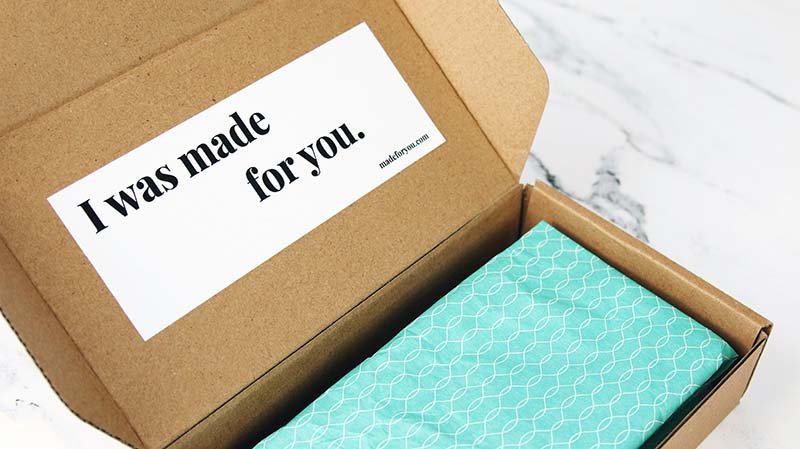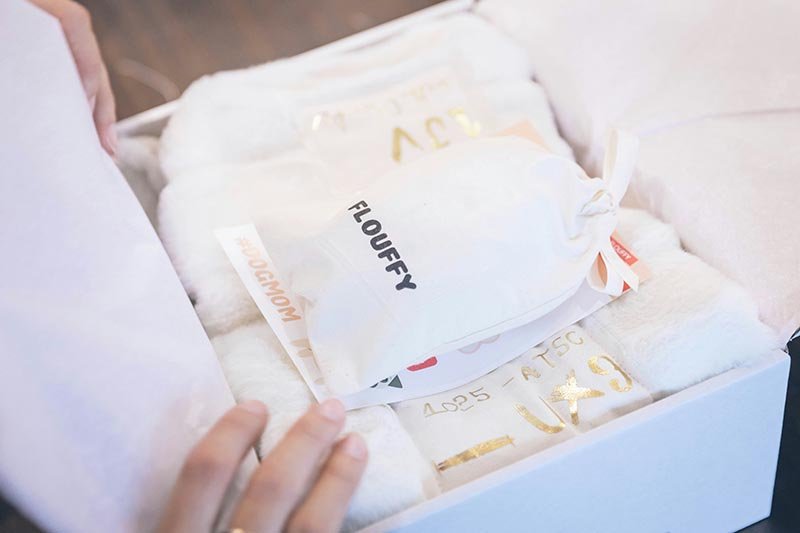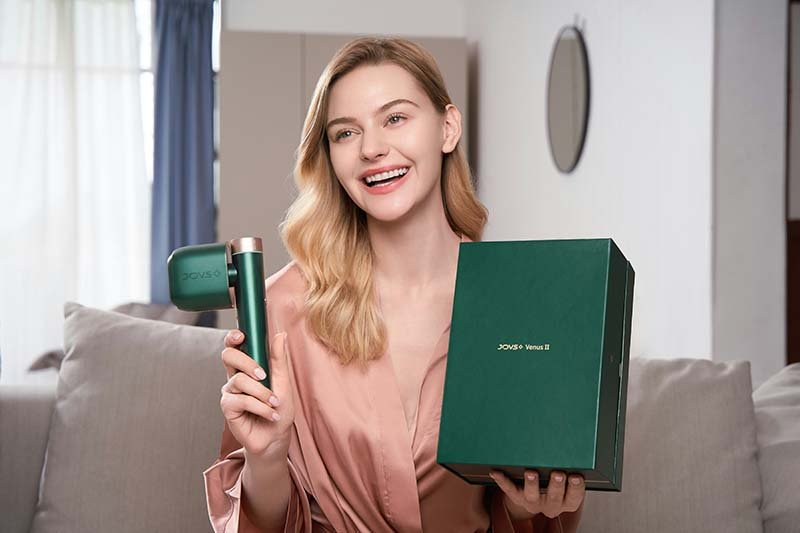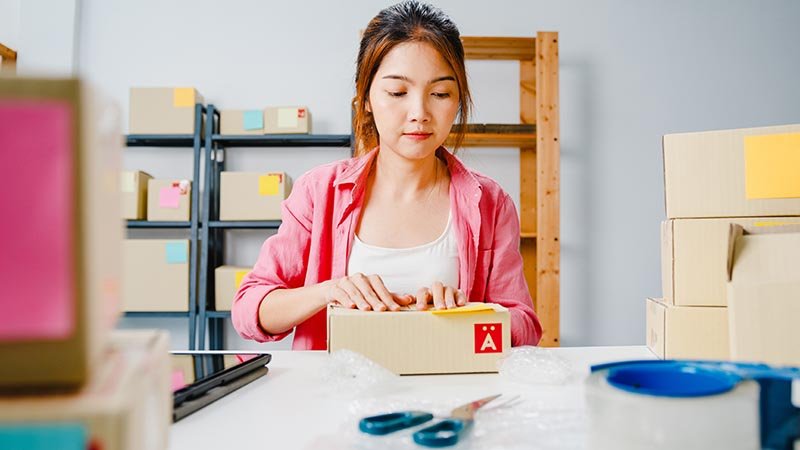A well-orchestrated unboxing doesn’t just protect a product—it inspires. In today’s competitive market, brands strive to stand out, and packaging is often the very first tangible interaction a customer has with what you’re selling. According to Future Market Insights, the global custom packaging boxes market is set to grow from USD 6.1 billion in 2024 to USD 8.9 billion by 2034, reflecting just how significant and in-demand branded, tailor-made packaging solutions have become. Meanwhile, research found that 79% of consumers reported satisfaction with their unboxing experience—evidence that e-commerce sellers and retailers are stepping up their packaging game.
But how do you ensure your packaging strategy goes beyond mundane?
Below, we’ll dissect the essentials of a memorable unboxing experience, from fundamental design elements and brand synergy to practical cost considerations and metrics for gauging success. Whether you’re a startup seeking an edge or an established brand craving a refresh, these insights will arm you with the know-how to create unboxing moments that transform casual buyers into loyal advocates.
The Power of a Memorable Unboxing Experience
Why First Impressions Count
Packaging is not merely a protective shell. It is a marketing medium, a brand statement, and an emotional handshake with your consumer. Research shows that 35% of consumers watch unboxing videos, indicating how curious and excited people can be about the unveiling process. A positive, aesthetically captivating unboxing can spark trust and drive repeat purchases—especially for items gifted or shared on social media.
Building Brand Connections
When customers open a package, they form immediate judgments about quality, authenticity, and brand ethos. For instance, a crisp, elegantly designed box with layered reveals can subtly convey sophistication. If you’re championing sustainability, the choice of recycled or biodegradable materials can reinforce environmental values. These intangible cues, repeated over time, become part of your brand identity, meaning every unboxing is an opportunity to fortify brand loyalty.
Linking Packaging to Reorders and Word-of-Mouth
A “wow factor” at unboxing can prompt shoppers to reorder or recommend the product to friends. In an era when digital chatter and product reviews shape shopping habits, an on-point unboxing triggers unprompted endorsements. The packaging itself can double as a “billboard”: The Macfarlane Packaging survey indicates 58% of parcels arrive with some form of branding, turning shipping boxes into promotional avenues.
Key Elements of a Memorable Unboxing Experience

Aesthetics and Presentation
The unboxing journey begins with how the package looks. A cohesive color palette, balanced typography, and thematic alignment all help convey brand quality at a glance. Whether minimalistic or boldly patterned, the outer and inner packaging should offer a visually consistent story, guiding the customer’s eyes through each step of the unveiling. Simple but impactful touches—like brand logos or subtle pattern repeats—reinforce recognizability. Aim for a design flow that feels both pleasing and intuitive, so users appreciate the box before they ever see the product.
Sensory Appeal
A truly engaging unboxing doesn’t stop at visuals—it may incorporate tactile or olfactory elements too. Textures like soft-touch coatings, embossed logos, or woven fabrics invite touch, adding a feeling of luxury or authenticity. Some brands introduce mild, signature scents (e.g., a faint floral note or a woodsy fragrance) if such fragrances align with the product or brand personality. Combined, these senses create a holistic experience that lingers in the customer’s mind, fostering excitement and memorability.
Practicality and Protection
Even the most artistic box falls short if it fails to safeguard the product. Protective inserts, snug compartments, or carefully folded sections mitigate shipping damage and reduce returns. Well-structured inner layers also enhance the unboxing flow—helping users navigate each reveal while ensuring items remain intact. Balancing style with function is essential: if pieces feel overly complicated or hamper product access, frustration can eclipse any initial delight.
Eco-Friendliness
Sustainability resonates strongly with modern consumers. Incorporating recyclable or compostable packaging signals ethical responsibility, potentially boosting brand loyalty. For example, 61% of customers show willingness to return packaging for reuse—provided the brand covers costs. By selecting biodegradable fillers or labeling how to recycle/return each component, you not only meet regulatory expectations but also align with buyer preferences for green, low-waste solutions. This interplay of design and eco-consciousness can transform unboxing into a statement of shared environmental values.
Utilizing Custom Packaging for Brand Recognition

Consistent Branding Across Channels
Packaging should echo the same visual language customers encounter in ads, on social media, or in-store—reinforcing brand identity at each interaction. Matching color palettes, recognizable logos, and uniform typography ensure instant recognition. If customers see consistent brand cues across channels, they perceive a cohesive, reliable presence. Custom packaging, whether a boldly printed outer box or a subtly branded shipping mailer, ties online and offline worlds together seamlessly, reminding customers of the brand they’ve engaged with before.
Brand Storytelling
Beyond logos and color blocks, custom packaging can weave a narrative about what your brand stands for. From mission statements on an inner flap to small textual nods about the product’s origin, such storytelling transforms the box from mere container to brand ambassador. If you’re a heritage-inspired brand, historical illustrations or vintage motifs might decorate the interior. If you’re modern and minimal, crisp lines and short, bold phrases could speak to your forward-thinking ethos. In this way, the unboxing reveals not just a product but a piece of your brand’s personality.
Recent surveys indicate that 79% of consumers express satisfaction with improved unboxing experiences—showing a direct correlation between thoughtful packaging design and positive brand association. Additionally, about 58% of packages already feature branding, highlighting the mainstream use of packaging as a marketing lever. By investing in custom box designs, specialized finishes, or curated interior elements, brands can cater to this consumer appetite for elevated unboxing moments. This can translate into repeat orders, recommendations, or social media posts praising both product and brand presentation.
Incorporating High-Quality Materials and Finishes
Signaling Quality
When it comes to luxury or high-end goods, packaging materials must match product value. Low-grade cardboard might undermine a premium item inside. Conversely, heavier stocks with matte or soft-touch laminations instantly reflect higher perceived worth.
Types of Finishes
- Gloss or Matte Lamination: Gloss can feel modern and bright, while matte exudes elegance and restraint.
- Soft-Touch Coating: Provides a velvety feel, enhancing the luxurious unboxing.
- UV Spot Coating: Adds shine only to certain elements, letting brand logos or text “pop.”
The Eco-Friendly Edge
Durability needn’t conflict with sustainability. Many businesses find success integrating recycled materials or environmentally safe inks. With about 61% of consumers willing to return packaging if the cost is covered, creating sturdy, reusable structures can also impress eco-minded buyers, further distinguishing your brand from less forward-thinking competitors.
Adding Surprise Elements to Enhance Unboxing

Layered Reveals
Your packaging strategy might adopt an onion-like approach: an outer shipping box, an inner branded container, and internal tissue wraps or compartments. This layering fosters anticipation as customers peel back each step, reminiscent of gift-opening. Slowing the pace of revelation can make the product feel more exclusive.
Personal Touches
Handwritten thank-you notes, branded postcards, or small freebies can transform a routine purchase into a personal exchange. This is especially potent for artisanal or small-scale brands. Even automated typed messages, if designed cleverly (perhaps containing a short brand story or a discount for the next purchase), highlight your thoughtfulness.
Interactive Elements
For more playful or tech-savvy brands, incorporate QR codes that reveal behind-the-scenes product videos or brand founder messages. Some might tuck a riddle or puzzle card inside, encouraging social media shares. These creative flourishes feed the sense of discovery and uniqueness.
Tips for Small Businesses to Enhance Unboxing

Balancing Budget and Impact
Smaller brands often operate on tighter budgets. However, thoughtful details can still impress without extravagant costs. Choose one or two focal design elements—like a color-printed interior or a charming brand sticker—and keep the rest minimal. Using standard box sizes can reduce costs, freeing resources for internal branding inserts.
Simple Upgrades
- Printed Tissue Paper: A low-cost method to add brand flair; even a repetitive brand pattern in a single color can look stylish.
- Branded Tape: Replacing generic tape with printed or color-coded brand tape can unify your packaging’s theme.
- Eco Stickers: If your brand claims sustainability, including small icons or textual reminders of your green commitment can reassure and delight.
Amplifying Brand Stories
Rather than elaborate structures, you might rely on imaginative text or minimal line art that references your brand’s heritage or product origin. A well-composed message inside the lid or short brand motto can forge a personal connection. Often, sincerity and brand-aligned visuals outshine budget constraints, proving memorable experiences aren’t exclusive to big players.
Common Mistakes to Avoid in Unboxing Design
Overly Complicated Packaging
An intricate opening sequence may initially sound fancy, but if customers struggle to access their items, frustration overshadow any initial delight. Strike a balance: layered reveals are good; labyrinthine boxes that require guesswork are not.
Ignoring Product Protection
No matter how visually enthralling, packaging fails if items arrive damaged. Ensure your design accommodates adequate cushioning, especially for delicate or high-value goods. If breakage occurs frequently, it not only tarnishes the unboxing but also burdens you with returns and replacements.
Mismatch Between Exterior and Interior
If your external packaging signals luxury but the inside is plain, or vice versa, it can jar consumers. Consistency fosters brand trust. If you opt for elegant, minimal outer boxes, maintain a consistent vibe internally—like using clean, minimal inserts or subtle color elements, not a sudden burst of bright, unrelated patterns.
Skipping Brand Cohesion
Packaging design and brand identity must sync. Clashing color palettes or random typography can reduce brand recall. Make sure your packaging complements logos, website design, and marketing materials to create a cohesive brand presence.
Measuring the Impact: Key Metrics and ROI

Customer Feedback and Repeat Purchases
Track how the unboxing influences reorders or brand loyalty. Post-purchase surveys or net promoter scores help gauge satisfaction. A well-loved unboxing can also coax first-time buyers into becoming brand ambassadors.
Social Media Engagement
Monitor brand mentions, unboxing hashtags, or user-generated content. With 35% of consumers indicating interest in unboxing videos, encourage them to share on TikTok, Instagram, or YouTube. This user content can organically reach potential buyers at minimal cost, effectively amplifying your brand message.
Reduced Return Rates
If your packaging reduces damages during shipping or clarifies how to handle fragile items, returns drop—directly influencing your bottom line. Packaging that’s easy to open and reseal can also support potential returns, an appealing feature for many online shoppers seeking flexibility.
Cost-Benefit Analysis
Compare the expense of custom packaging elements against the uplift in customer satisfaction, brand image, or social media buzz. If each unit of packaging costs a bit more but drives a measurable spike in repeat sales or brand impressions, the net benefit can be significant. You might even track coupon redemption rates if you embed discount codes or postcards in your unboxing.
FAQs About Unboxing and Custom Packaging
What is the unboxing experience?
It’s the event or ritual consumers undergo when opening a product’s packaging for the first time. It ranges from removing shipping materials to revealing the product itself, often featuring design elements, protective layers, and brand messages.
Why is unboxing important for brands?
Unboxing shapes initial impressions, influences brand loyalty, and can trigger word-of-mouth marketing or social media shares. A memorable experience elevates perceived quality and fosters positive emotional connections.
How can I improve my unboxing experience?
Focus on cohesive branding, thoughtful layering, personal touches (like notes or freebies), and robust product protection. Budget-friendly gestures—like a brand sticker or colored tissue—can also heighten visual appeal.
What are some examples of great unboxing experiences?
Many well-known tech, beauty, and subscription box companies excel at layering reveals, using high-quality materials, and aligning each step (outer box, interior design, product placement) with brand identity.
How does packaging affect customer satisfaction?
Packaging underscores brand quality and care. If it’s subpar or inconsistent with the brand’s promise, consumers may doubt product credibility. Conversely, polished, easy-to-open packaging can boost satisfaction and repeat business.
What are some affordable ways to enhance an unboxing experience?
Use custom stickers, brand-colored tissue, and simple inserts. Personal touches, like a brief handwritten note, can impress customers without high production costs.
What are the latest trends in custom packaging for unboxing?
Eco-friendly materials, interactive elements (QR codes, AR features), minimalist designs with subtle brand accents, and refined finishing (like matte laminations) are trending. Many businesses also incorporate repeat usage or returnable packaging programs.
Conclusion: Boosting Brand Loyalty Through Exceptional Unboxing
In a market where 79% of consumers already appreciate improved unboxing, your brand can still go further in personalizing and delighting. Thoughtful packaging connects product benefits with a sensory experience—aligning brand visuals, finishing styles, and surprise elements to forge an emotional bond that outlasts the product’s arrival.
As the custom packaging boxes market continues to expand, it’s clear that competitive advantage lies in how seamlessly your package design and brand identity merge. Whether through minimal chic designs, premium finishing, or playful interactive steps, exceptional unboxing can drive repeat sales, social endorsements, and unwavering customer devotion. Embrace these ideas—combining creativity with practical strategies—and your unboxing moments will become a signature brand asset, fostering loyalty and letting customers relish each new product reveal.
Contact for a Free Consultation!

